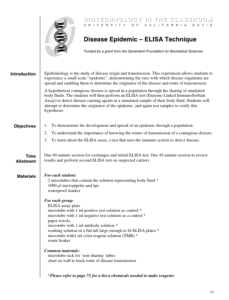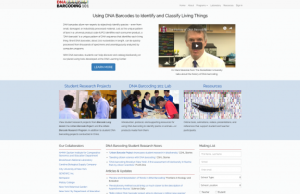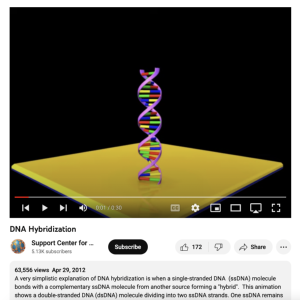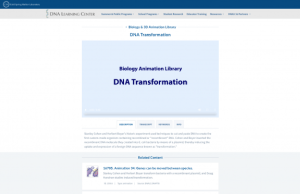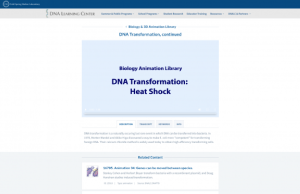Browse Resources
Bio and Chemical Technologies -- Biotechnology
Resources | |
|---|---|
From the University of California, Davis, Partnership for Plant Genomics Education, this biotechnology laboratory is a two-day activity using the ELISA assay, a "test that uses the immune system to detect disease," to study the epidemiology of a hypothetical small scale epidemic. The lesson gives...
This animation from Cold Spring Harbor Laboratory's Dolan DNA Learning Center presents DNA arrays. The animation contains information on Pat Brown's discovery and the purpose of DNA arrays to study gene expression as well as its role in the development of pharmacogenomic treatment for diseases such...
The Using DNA Barcodes to Identify and Classify Living Things laboratory demonstrates several important concepts of modern biology. During the course of this laboratory, students will collect and analyze sequence data from plants or animals or products from them, use DNA sequences to identify...
This webinar, provided by Austin Community College, discusses three questions about SARS-CoV-2. The questions discussed include:
Where did SARS-CoV-2 come from?
How is COVID-19 spreading through the globe?
What can we learn about antibodies to SARS-CoV-2?
Tools to help answer these questions...
This animated video, created by Support Center for Microsystems Education (SCME), illustrates how DNA hybridization works in the context of nanofabrication. The animation and associated narration describe "DNA hybridization is when a single-stranded DNA (ssDNA) molecule bonds with a complementary...
This animated video, created by Support Center for Microsystems Education (SCME), illustrates how DNA microarrays work in the context of nanofabrication. The animation and associated narration describe "how a DNA microarray identifies complementary DNA (cDNA) strands from a sample. On the substrate...
In this video, created by Support Center for Microsystems Education (SCME), viewers are introduced to the concept of DNA microarray fabrication. Specific topics include: non-contact printing process, photolithography process and maskless photolithography process. This is the third in a series of...
The discovery of enzymes that could cut and paste DNA made genetic engineering possible. Restriction enzymes, found naturally in bacteria, can be used to cut DNA fragment at specific sequences, while another enzyme, DNA ligase, can attach or rejoin DNA fragments with complementary ends. This...
Stanley Cohen and Herbert Boyer's historic experiment used techniques to cut and paste DNA to create the first custom-made organism containing recombined or 'recombinant' DNA. Cohen and Boyer inserted the recombinant DNA molecule they created into E. coli bacteria by means of a plasmid, thereby...
DNA transformation is a naturally occurring but rare event in which DNA can be transferred into bacteria. In 1970, Morton Mandel and Akiko Higa discovered a way to make E. coli more 'competent' for transforming foreign DNA. Their calcium chloride method is widely used today to obtain high-efficiency...
| |
| ← Previous | Next → |
